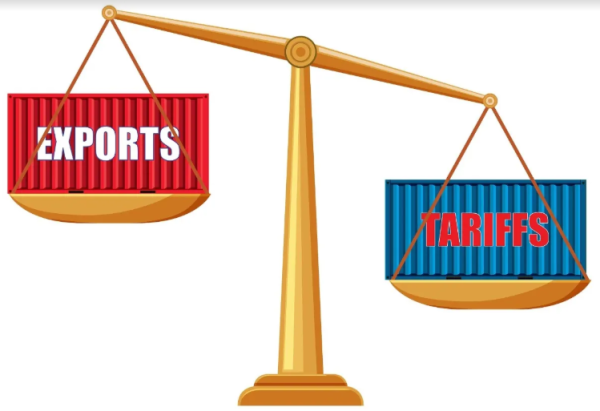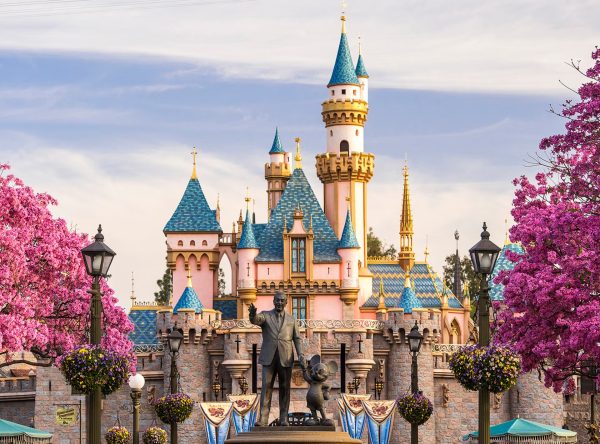Volcanic Eruption in Tonga Sends Waves Around the World

A satellite image of the eruption of Hunga Tonga-Hunga Ha’apai in January of 2022. Credit: Satellite image ©2022 Maxar Technologies
January 31, 2022
In early 2022, Tonga, a small island kingdom located in the South Pacific Ocean, became the epicenter of a massive explosion. But this was no nuclear test; rather, it was a volcanic eruption, the largest in the 21st century so far.
Tonga lies on the Ring of Fire, a subduction zone where the Pacific plate meets and sinks under other plates. The oceanic crust dives under the other plate, melting and turning into magma. The incredible pressure causes the magma to rise and create volcanic arcs.
The volcano in question is the Hunga Tonga-Hunga Ha’apai volcano, which formed in late 2014 after a submarine eruption expanded the islands of Hunga Tonga and Hunga Ha’apai, eventually connecting them. These types of eruptions are known as Surtseyan eruptions, which are submarine eruptions where magma reacts explosively with slurries of water and tephra (volcanic debris). They are named after the volcanic island of Surtsey near Iceland, which was formed from 1963 to 1967. Most Surtseyan islands erode very quickly, so the creation of Hunga Tonga-Hunga Ha’apai was watched closely by volcanologists.
Then, in December of 2021, the volcano began erupting again. At first, the eruptions created small explosions, expanding the island with new ash. The island expanded by 60% in the first days of 2022. But on January 13 and 14, the volcano started to release far more powerful blasts.
The exact cause of the Surtseyan explosions is currently unknown. However, scientists have hypothesized that the rim of the caldera collapsed, allowing large amounts of water to flow in and react explosively with the magma. The result was catastrophic; on January 15, an explosion destroyed the island, separating its constituent islands again and shrinking them. The blast is estimated to have been equivalent to about 10 million tons of TNT, 500 times more powerful than the nuclear bombs detonated at Hiroshima and Nagasaki.
The plume of ash was about 150 kilometers in diameter and 20 kilometers in height. The blast triggered tsunami waves which impacted the other islands of Tonga, flooding the islands and destroying infrastructure. The island of Tongatapu, the most populated island in Tonga, was hit by the tsunamis and blanketed with volcanic ash, making it difficult to communicate with anybody on the islands, even with satellite phones, and contaminating water supplies. UNICEF estimated that “84 percent of the population of 105,000 have been affected by the volcanic eruption and tsunami, while almost all (99 percent) are affected by the volcanic ash.” The government confirmed three deaths as a result of the disaster.
The volcanic plume moved west over Australia and reached the east coast of Africa before becoming undetectable. Tsunamis reached the coast of Peru, causing the deaths of two people and causing an oil spill that significantly impacted local fishermen.
UNICEF is currently focusing on delivering fresh water and other essential supplies to Tonga to help families recover from the catastrophe.
Sources:
-
Bressan, David. “Will The Eruption Of Hunga Tonga-Hunga Ha’apai Volcano Affect Earth’s Climate?” Forbes, 18 January 2022, https://www.forbes.com/sites/davidbressan/2022/01/18/will-the-eruption-of-hunga-tonga-hunga-haapai-volcano-affect-weather-and-the-earths-climate/?sh=4a240ef614e2. Accessed 30 January 2022.
-
Cave, Damien. “Heard, Felt but Barely Seen: How a Volcano Severed Tonga From the World.” The New York Times, 25 January 2022, https://www.nytimes.com/2022/01/21/world/australia/tonga-volcano.html. Accessed 30 January 2022.
-
“The Hunga Tonga-Hunga Ha’apai Eruption, a Multi-Hazard Event.” Nesdis, 26 January 2022, https://www.nesdis.noaa.gov/news/the-hunga-tonga-hunga-haapai-eruption-multi-hazard-event. Accessed 30 January 2022.
-
Latu, Josephine. “Global Volcanism Program | Hunga Tonga-Hunga Ha’apai.” Global Volcanism Program, https://volcano.si.edu/volcano.cfm?vn=243040. Accessed 30 January 2022.
-
National Geographic. “Ring of Fire.” National Geographic Society, 5 April 2019, https://www.nationalgeographic.org/encyclopedia/ring-fire/. Accessed 30 January 2022.
-
“3 dead, many homes destroyed — but Tonga escapes worst-case volcano eruption aftermath.” CBC, 18 January 2022, https://www.cbc.ca/news/world/tonga-volcano-tsunami-deaths-1.6318760. Accessed 30 January 2022.
-
Voiland, Adam. “Dramatic Changes at Hunga Tonga-Hunga Ha’apai.” NASA Earth Observatory, 23 January 2022, https://earthobservatory.nasa.gov/images/149367/dramatic-changes-at-hunga-tonga-hunga-haapai. Accessed 30 January 2022.









